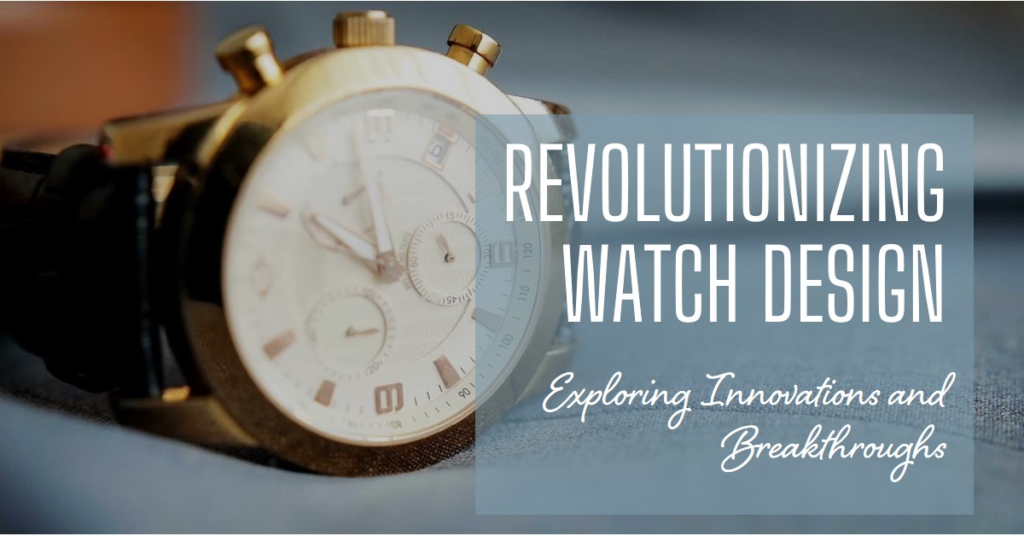The watch industry has evolved significantly over the years, with various innovations and design trends shaping its growth. Amidst the growing market, both affordable and high-end timepieces find their way into consumers’ hearts, demonstrating the industry’s readiness for new entrants and its ability to cater to a wide audience through innovations and breakthroughs in watch design.
Furthermore, the modern watch design landscape is characterized by a blend of traditional and contemporary elements, offering collectors a diverse range of unique or retro designs to choose from.
This article will delve into the “Innovations and Breakthroughs in Watch Design,” exploring how revolutionary materials, technological advancements beyond the mere tick, aesthetic innovations, customization options, sustainability, and ethical manufacturing are defining the future of watch design.
With an increase in the demand for smart wearables that monitor health on the go, especially during the pandemic, the integration of smartwatch features has become a significant area of growth.
The Genesis of Modern Watch Design
The evolution of watch design has been marked by significant milestones that reflect both technological advancements and shifts in societal norms. Here’s a brief overview:
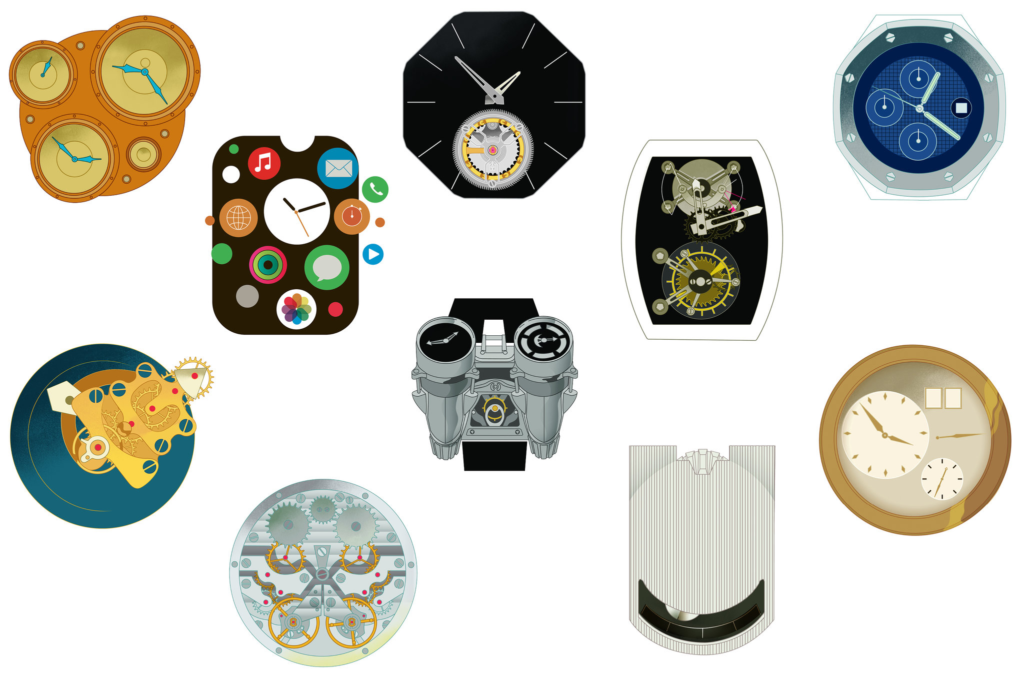
- 15th Century to 17th Century: The Dawn of Timekeeping
- The invention of the first mechanical clocks in the 15th century marked the beginning of formal timekeeping. These clocks were large, expensive, and predominantly owned by churches and the wealthy.
- By the 16th century, the first portable timekeeping devices emerged, leading to the invention of the pocket watch in the 17th century. This innovation made timekeeping more personal and portable.

- 18th Century to 20th Century: Wristwatches and Quartz Revolution
- The wristwatch, initially a women’s fashion accessory in the 18th century, evolved into a practical tool for men by the late 19th century.
- The 19th century also saw the invention of the quartz watch, offering greater accuracy and affordability. Quartz technology dominated the 20th century, paving the way for digital watches that used LCDs for time display.

- 21st Century: The Smartwatch Era
- Entering the 21st century, the smartwatch became a revolutionary product, integrating the functionalities of a smartphone with traditional timekeeping. This allowed for features like fitness tracking, phone calls, and internet browsing directly from the wrist.

- Entering the 21st century, the smartwatch became a revolutionary product, integrating the functionalities of a smartphone with traditional timekeeping. This allowed for features like fitness tracking, phone calls, and internet browsing directly from the wrist.
These milestones not only highlight the technical evolution but also underscore the changing relationship between people and their perception of time and its management.
Revolutionary Materials in Watchmaking

In the realm of watchmaking, the choice of materials is not just about aesthetics but also about innovation, durability, and sustainability. Here’s an overview of the revolutionary materials shaping contemporary watch design:
- High-Tech Materials:
- Carbon Fiber: Known for its exceptional strength and lightweight properties, making it ideal for sports and luxury timepieces.
- Ceramic: Offers scratch resistance and longevity, maintaining beauty and integrity over time.
- Titanium: Valued for its high strength-to-weight ratio, providing superior durability and comfort.
- Sustainable Practices:
- Recycled Metals: Including stainless steel and titanium, reducing the environmental impact.
- Sustainable Leather: Sourced from eco-friendly tanneries, minimizing harmful chemicals.
- Solar-Powered and Kinetic Watches: Utilizing renewable energy sources for operation, leading the way in sustainable watchmaking.
- Innovative Coatings and Alloys:
- PVD Coating: Enhances durability and offers resistance to scratches, rust, and moisture.
- Special Alloys and Composites: Including industrial sapphire and advanced ceramics for technical functions and protection.
These materials not only redefine the functionality and longevity of watches but also reflect a commitment to environmental responsibility and innovation in design.
Technological Advancements: Beyond the Tick
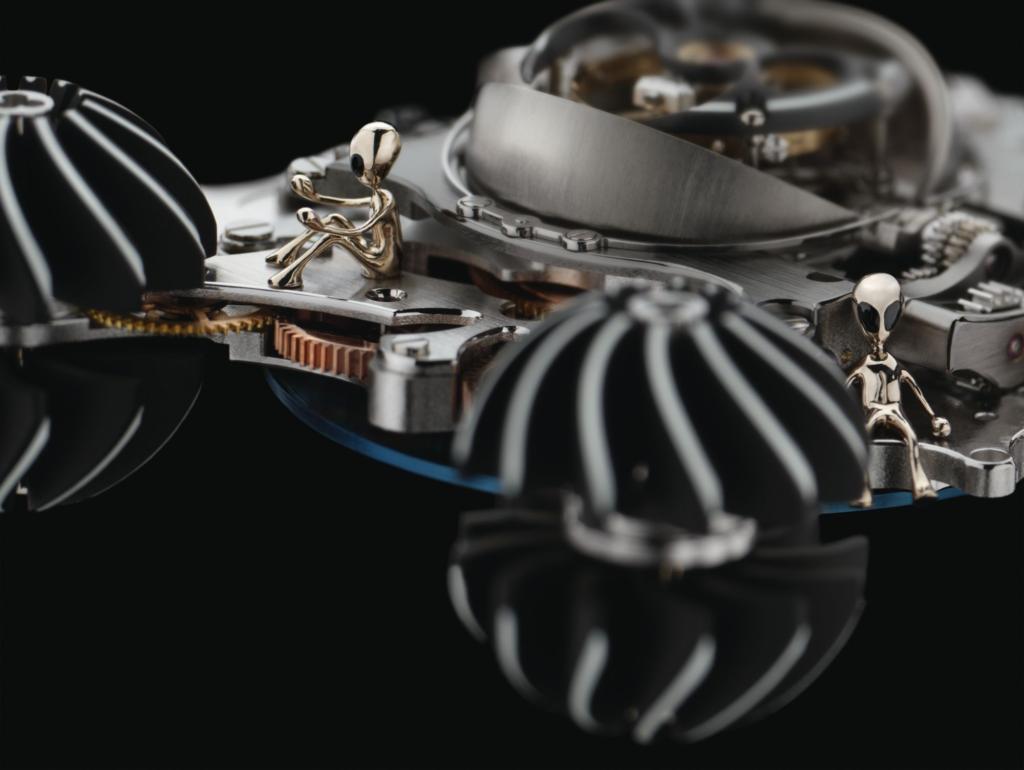
In the realm of watch design, technological advancements have significantly elevated both the functionality and aesthetic appeal of timepieces. Here are some of the key innovations:
- Anti-Magnetic Movements and Advanced Water Resistance:
- Anti-Magnetic Movements: Watches now incorporate materials and movements resistant to magnetic fields, ensuring accuracy remains unaffected by such environmental factors.
- Advanced Water Resistance: Enhanced seals and construction techniques enable watches to withstand greater depths, making them suitable for divers and underwater adventurers.
- Smart Features and AI Integration:
- Smartwatches: These devices offer an array of features including GPS tracking, heart rate monitoring, and smartphone connectivity, catering to a digitally connected lifestyle.
- AI in Manufacturing and Customization: AI-driven technologies aid in quality control, personalization, and predictive maintenance, ensuring high-quality production and tailored consumer experiences.
- Hybrid and Automatic Movements:
- Hybrid Watches: Combining traditional mechanical aesthetics with smart functionalities, these watches bridge the gap between classic and modern design.
- Automatic Watches: Improved self-winding mechanisms powered by the wearer’s motion enhance reliability and precision, showcasing the marvel of engineering in watchmaking.
These advancements not only redefine the way we interact with timepieces but also highlight the industry’s commitment to innovation and excellence in design.
Aesthetic Innovations and Customization
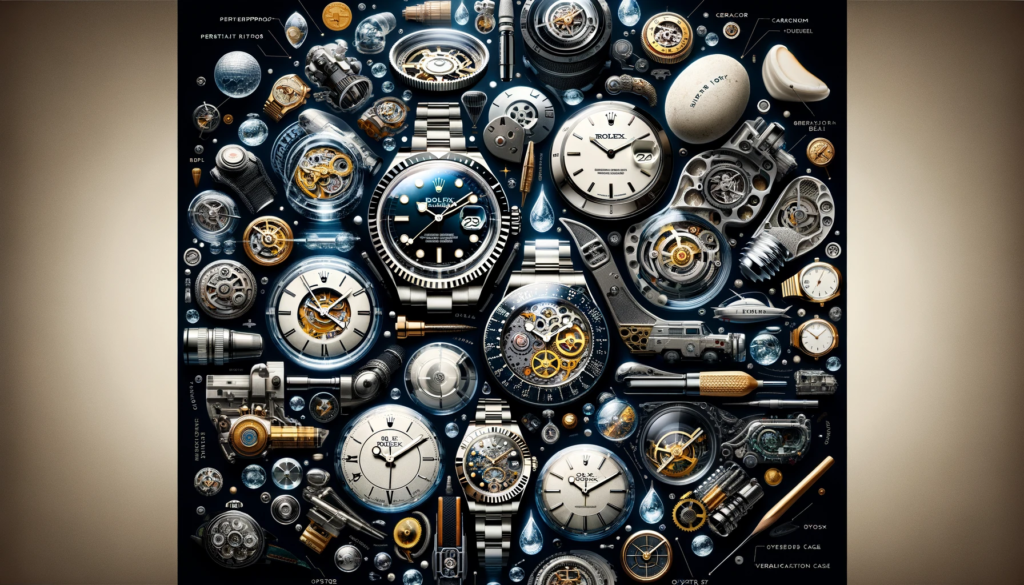
In the ever-evolving world of watch design, aesthetic innovations and customization have taken center stage, offering consumers an unprecedented ability to express their unique style and preferences. Key trends in this area include:
- Minimalist and Bauhaus-Inspired Designs: Emphasizing simplicity, clean lines, and functional design. Brands like NOMOS Glashütte and Junghans lead this trend with watches that blend modern aesthetics with timeless elegance.
- Bold Use of Color and Material: From vibrant dials in shades of electric blue and fiery red to unconventional materials like ceramic and wood, watchmakers are pushing the boundaries of traditional design. This shift not only adds a splash of personality but also showcases the technical prowess and innovative spirit of brands.
- Customization and Personalization: The rise of online configurators and virtual try-on platforms has democratized the luxury of bespoke watchmaking, allowing consumers to tailor aspects of their timepieces, from case material to strap style. This trend is supported by both high-end brands offering bespoke services and independent watchmakers who excel in delivering personalized experiences.
These developments reflect a broader shift towards a more personalized, expressive approach to watch design, where the wearer’s individuality and the craftsmanship of the watch converge to create something truly special.
Sustainability and Ethical Manufacturing
In the pursuit of sustainability and ethical manufacturing, the watch industry has made significant strides, embracing practices that not only minimize environmental impact but also ensure ethical sourcing and labor practices. Here’s an overview of these commendable efforts:
- Sustainable and Ethical Material Sourcing:
- Recycled or ethically sourced materials are increasingly being used in watch production.
- Watch brands are ensuring traceability and ethical sourcing, working with suppliers who adhere to fair labor practices.
- The Responsible Jewellery Council (RJC) offers certification to manufacturers meeting eco-conscious material sourcing standards.
- Energy and Resource Efficiency:
- Reduction of energy consumption through optimized production workflows and the use of renewable energy sources.
- Water usage minimization and incorporation of solar-powered watches.
- Brands like IWC Schaffhausen have achieved a 40% reduction in water usage, showcasing the potential for significant environmental impact reduction.
- Recycling and Packaging Innovations:
- Recycling programs encourage the return of old watches for repurposing.
- Packaging innovations include the use of recycled cardboard and the elimination of single-use plastics, as seen with Breitling and Blancpain.
These initiatives not only reflect the watch industry’s commitment to sustainability but also cater to the growing consumer demand for products that are both luxurious and responsible.
The Future of Watch Design
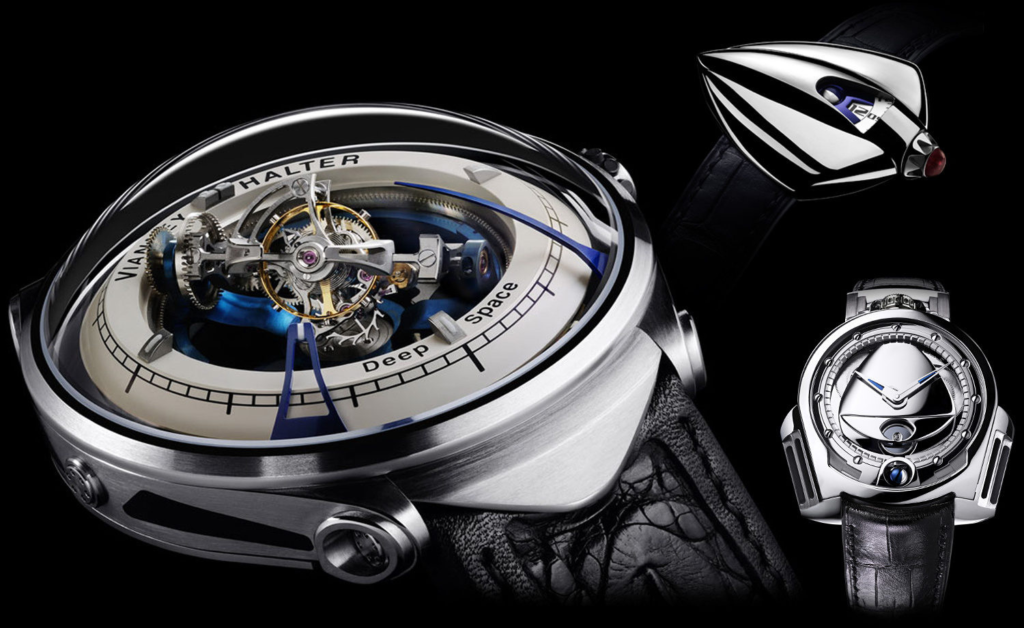
As the horizon of watch design expands, the fusion of innovation, technology, and tradition paints a vivid picture of the future. Here’s a glimpse into what’s shaping the next wave of timepieces:
- Technological Integration and Sustainability:
- Future designs will likely see a deeper integration of technology, with smart features becoming more seamless and intuitive.
- Emphasis on sustainability will drive the exploration of new, eco-friendly materials, reflecting a commitment to environmental stewardship.
- Trend Predictions for 2024:
- Size and Design: A shift towards more conservative designs and compact case sizes is anticipated, moving away from the larger, more colorful trends of previous years.
- Material and Style: Expect a rise in vintage-inspired designs and the use of traditional materials like yellow gold, signaling a nod to old-school luxury.
- Market Dynamics: The luxury watch market may return to a buyer’s market, with brands focusing on competitive pricing and enhancing the product-buying experience.
- Revivals and Recognition:
- Vintage and Reissues: Significant anniversaries for brands like Rolex could bring special edition pieces, drawing on archival designs but incorporating modern technology.
- Rise of Independents: A growing demand for unique, bespoke timepieces will spotlight independent watchmakers, offering alternatives to mass-produced models.
These insights into the future of watch design underscore a blend of innovation, tradition, and consumer expectations, setting the stage for an exciting evolution in time.
Conclusion
Throughout the exploration of contemporary watch design, it’s clear that the industry stands at a captivating intersection of tradition and innovation. The journey from the rudimentary timekeeping mechanisms of the past to today’s sophisticated wearables showcases not only technological progress but also a deeper understanding and appreciation of time itself. This evolution, marked by breakthroughs in materials, aesthetics, and sustainability, reflects a responsive industry that continuously adapts to meet the diverse needs and values of its clientele.
Looking ahead, the future of watch design promises further integration of cutting-edge technology with environmental consciousness, highlighting a path toward more sustainable and ethically manufactured timepieces. As the industry navigates these innovations, the enduring essence of watchmaking—a blend of artistry, precision, and personal expression—remains unfazed. In this dynamic landscape, watches are more than just timekeepers; they are testaments to human ingenuity and a connection to the timeless pursuit of excellence.
FAQs
Q: How have watches evolved throughout history?
A: Watches have undergone significant changes, particularly since the 1960s with the introduction of the quartz watch, which operated on electricity and used a vibrating quartz crystal to keep time. This innovation marked a major shift in the industry and led to the dominance of quartz watches over mechanical ones in the 1980s, an event known as the “quartz crisis”.
Q: Which watchmaker is renowned for its continuous innovation?
A: Rolex, established in 1905 by Hans Wilsdorf and Alfred Davis, has consistently led the way in watchmaking innovation. The brand is famous for introducing several pioneering technologies, including the first waterproof wristwatch, the Oyster, in 1926.
Q: What are some anticipated features of future watch designs?
A: Smartwatches of the future are expected to feature exciting innovations such as flexible displays that can bend to fit the wrist more comfortably, and advanced biometric sensors that could provide real-time, highly accurate health monitoring.
Q: Is there a future for mechanical watches in the modern era?
A: Mechanical watches are poised for a promising future, combining the allure of traditional craftsmanship with modern innovations. Advances in materials, technology, hybrid movements, and distinctive designs are driving the mechanical watch industry towards an exciting new chapter.
- The History of Omega: A Journey of Excellence & Precision - March 28, 2024
- What is Cartier known for? - March 25, 2024
- Exploring Innovations and Breakthroughs inWatch Design - March 25, 2024

